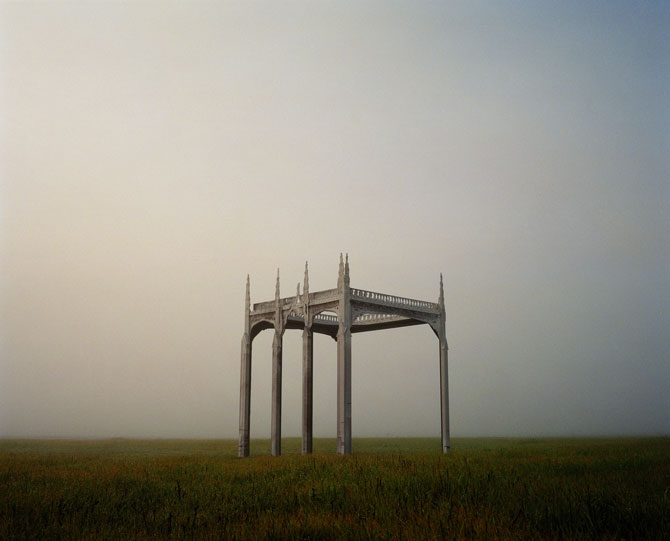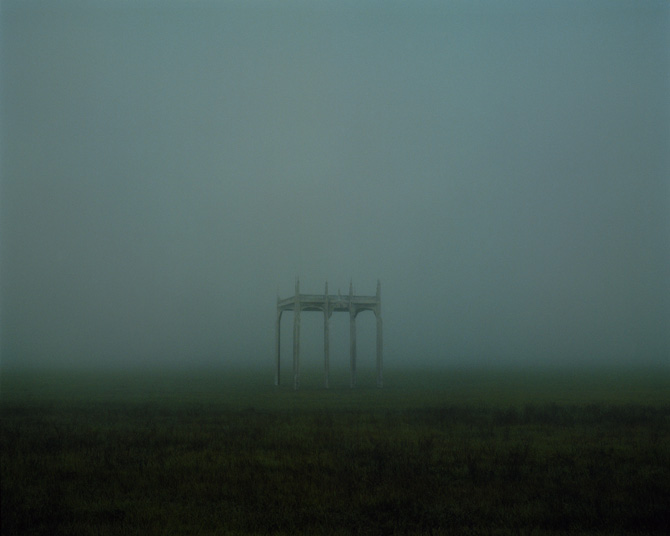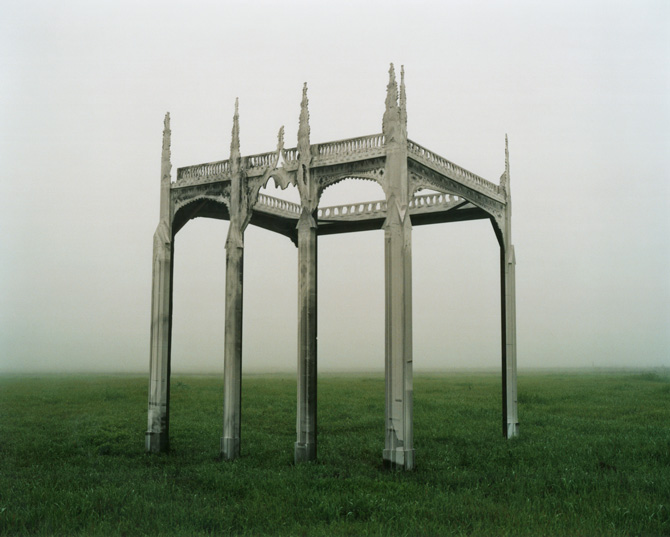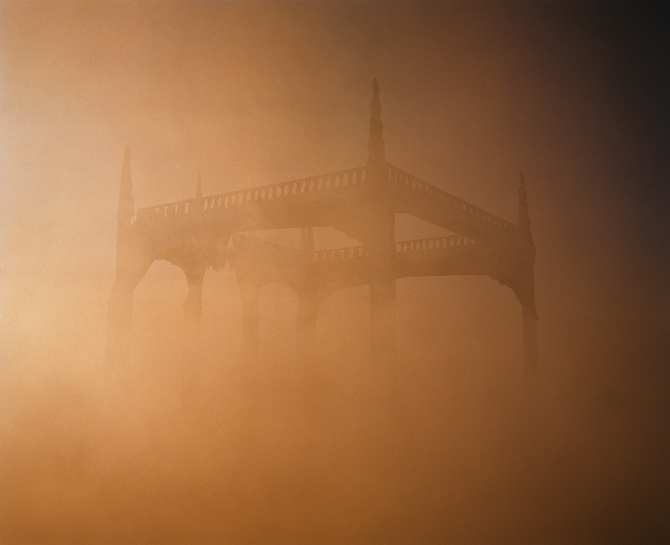

“All that information – all that information capacity – looms over us, not quite visible, not quite tangible, but awfully real; amorphous, spectral; hovering nearby, yet not situated in any one place.” James Gleick, The Information
A house made of air and distance and echoes was an architectural sculpture installed on an abandoned airfield. The sculpture stood 1.5 stories high, and was constructed from hand-cut wood wrapped in printed vinyl, giving it the appearance of stone.
The installation was documented via medium format film at different times of day, in conditions of dense fog.
The work is an adaptation of an adaptation of the gothic style. In 1825, a shipbuilder named George W. Bourne wrapped the exterior of his Federalist home in Kennebunk, Maine, in hand-tooled wood trim that exuberantly appropriated High Gothic cathedrals. The house has since become known as the Wedding Cake House, and is the most well known example of the Carpenter Gothic style.
For this project, multiple images of the Wedding Cake House made by tourists from different vantage points were sourced from the Internet. These images were collaged into a composite, printed on vinyl and applied to the sculpture. Shadows in the printed image mix with shadows from the sculptural relief.
In a shared process, our communication is increasingly pulled into digital, virtual space. Our informational lives are passed through Zoom, email, text, and proliferating forms of messaging. Reality is ghosted.
Light as central measure of the High Gothic has given way to the glow of the screen and the diffuse ever-presence of the cloud.
The sculpture was conceived as negative space sited in the negative space of a 35 acre abandoned airfield. While standing inside, its form disappeared, and became instead a frame for the landscape.
The title is taken from a line in Cèsar Aira's novel Ghosts.
A house made of air and distance and echoes references works of environmental and land art; considerations of public and private space; The Palace at 4am by Alberto Giacometti; American Transcendentalism; technology; virtual space; information theory; and the house as concept.


